In the 1980s or early 90s, if you asked, “Can you plasma cut aluminum? The answer would be a resounding No. However, with the advancement in technology, fabricating aluminum with a plasma cutter has become not only possible but also highly effective.
So, what does the cutting process entail? Are there settings to use when cutting aluminum with a plasma cutter? What are the risks involved in the process? Which is better for cutting aluminum, plasma cutting aluminum or laser cutting? Keep reading as we provide answers to these questions and other important information concerning cutting aluminum with a plasma cutter.
Can Plasma Cut Aluminum?
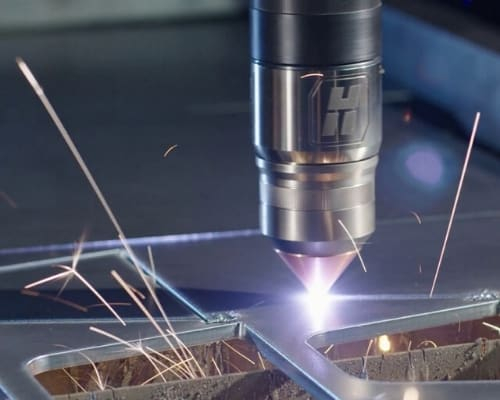
Plasma cutting can cut any metal that conducts electricity, including aluminum. Some fabricators believe cutting aluminum using plasma cutting systems is not advisable due to the low melting point of aluminum as compared to other metals. While it is true that the metal has a low melting point, it is still possible to produce aluminum parts with tight tolerances using plasma cutting. However, it would involve selecting the right plasma gas and cutting parameters.
Here are some tips for cutting aluminum with plasma cutter.
- Are you looking to cut a large piece of aluminum sheet? Then it is best to sketch it out first before using the plasma cutter.
- To avoid damaging the cutter, do not drag it on the surface of the aluminum sheet. Rather hold it above the cut area.
- You need a drag tip if you plan on tracing a template, also keep in mind that aluminum becomes gooey and sticky when warm.
- Ensure there is a balance between the amperage and cut travel speed. In other words, move the torch as fast as needed to penetrate the metal.
- Placing the torch correctly is a necessity to prevent melting the aluminum sheet into liquid.
- The thickness of the aluminum sheet you want to cut should determine the plasma cutter you use. A plasma cutter with a wider gap and bigger arc is best for thick aluminum sheets.
How to Plasma Cut Aluminum
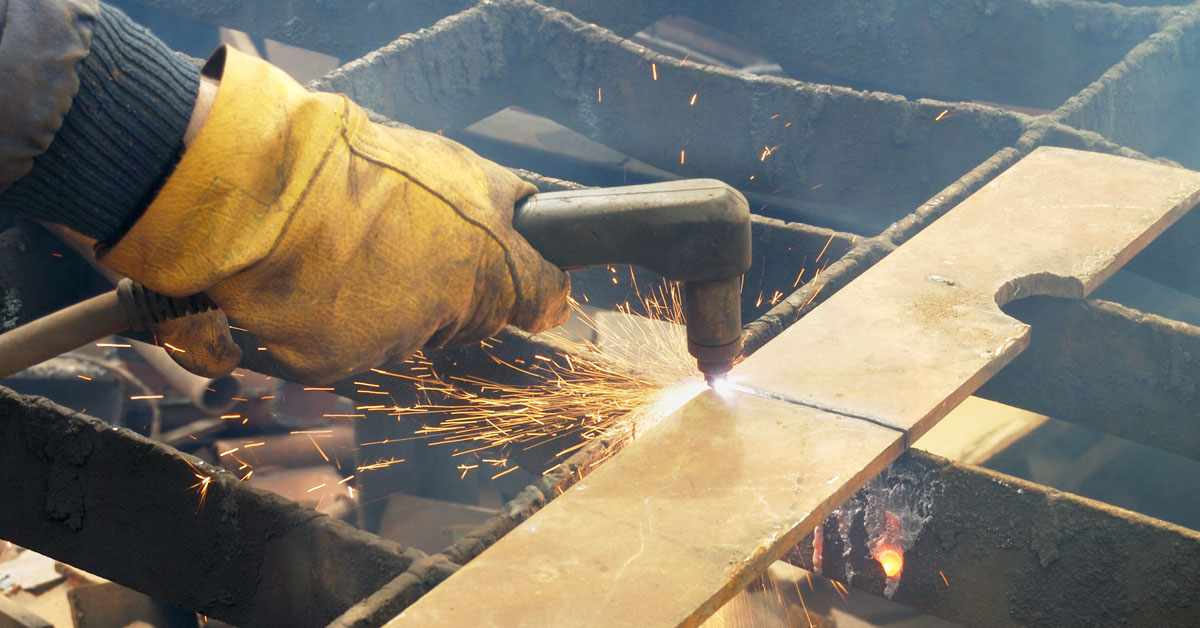
Cutting aluminum with a plasma cutter is similar to that used in cutting steel. However, the major differences are the gas mixture, nozzle, and settings. Let us examine this process in detail.
The Gas
Using the wrong gas when plasma cutting aluminum would result in bad cuts as well as slag. You could use regular air as plasma cutting gas with aluminum, but you should note that the surface finish would be rough. The roughness is primarily due to the oxidation of the cut surface due to the air in contact with it. Consequently, before welding aluminum parts plasma cut with air, the part would need to undergo surface treatment to avoid porous welds.
So, to ensure clean cuts and save time on surface treatments, it is best to use different gas mixtures when you cut aluminum. When aluminum sheet is more than half an inch thick, it is best to use nitrogen as the secondary gas and argon-helium as the primary one. On the other hand, for aluminum sheets less than half an inch thick, compressed air should be the secondary gas, while nitrogen becomes the primary gas.
The Nozzle
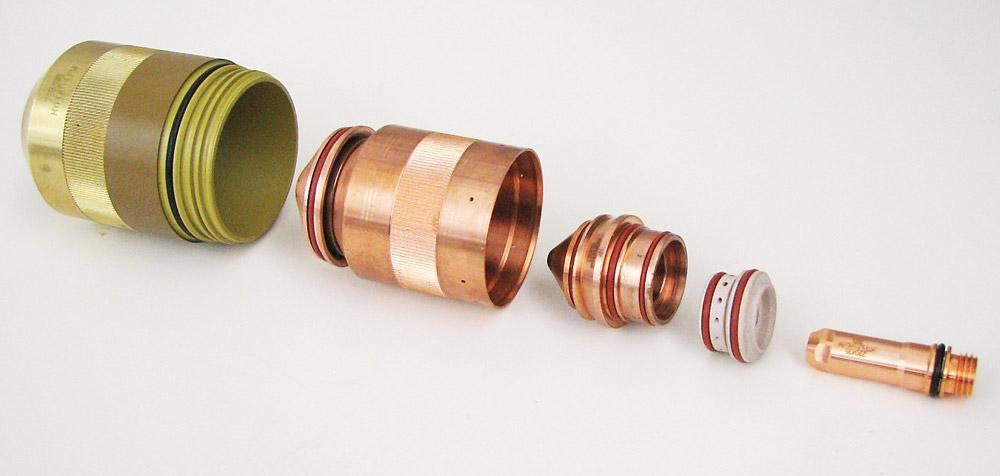
The nozzle is that part of the plasma cutter that helps concentrate the plasma arc cutting stream on the aluminum being cut. The type of nozzle you use is responsible for your cut’s angle, power, and size. Furthermore, nozzles made from copper alloy are best as they conduct both heat and electricity excellently.
The size of the nozzle hold determines the arc size and voltage. For instance, it is best to go for nozzles with smaller orifices when gunning for a larger arc and higher voltages. Also, consider the temperature limit stated on your nozzle because exceeding that limit could melt it or reduce its lifespan.
Settings
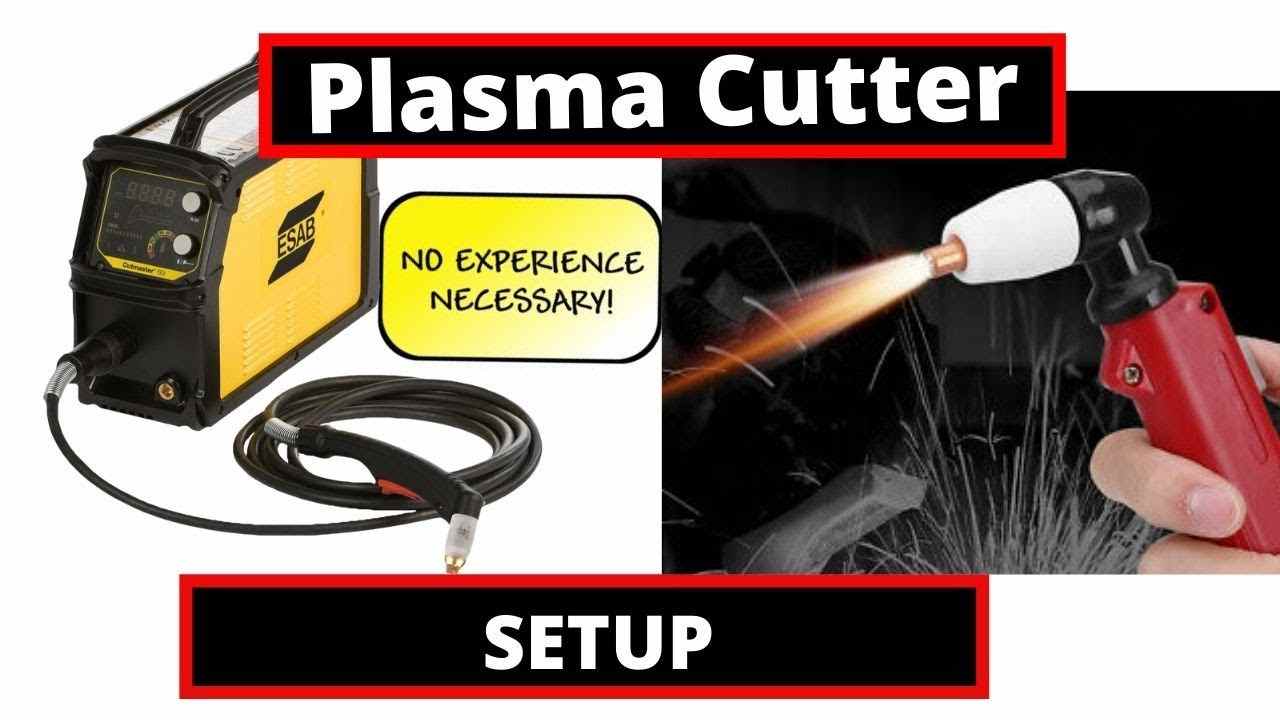
The settings for plasma cutting aluminum vary from machine to machine. This is why it is best to consult your machine manual for accurate settings. The manual should provide the correct amperage and torch speed for cutting aluminum.
Please note that the right cutting speed is important when CNC plasma cutting aluminum. Cutting too slowly would result in wasting power while cutting too fast might result in unsuccessful cuts. Generally, cutting speeds should range from 1695 mm/m to 4750mm/m depending on arc voltage and aluminum sheet thickness.
Plasma cutting is one of the best methods used in fabricating aluminum parts. However, like most metal fabrication methods, adequate technical know-how is necessary. Aside from the technicalities of the process, doing it right requires a certain amount of skill and the right machines.
At RapidDirect, we have highly experienced plasma-cutting professionals and high-precision plasma cutters that can cut your aluminum with high precision and accuracy. Besides, with our fast lead time of 3-5 days, you get your plasma cut product or component in little or no time.
Additionally, we guarantee high-quality products that meet and surpass industry standards. We also offer a wide range of finishing options, including anodizing, powder coating, electroplating, polishing, and brushing, depending on your finishing requirements.
So, why wait? Simply upload your design to our platform and get your quote and free DFM analysis within one day.
Is Plasma Cutting Aluminum Dangerous? What Are the Hazards?
While plasma cutting is generally a safe method of metal fabrication, there are situations where it becomes dangerous as a method of aluminum fabrication. This is especially true where there is no proper safety equipment. So what exactly happens?
Plasma cutting aluminum produces slag, which reacts with the oxygen in water, leaving free hydrogen molecules. As work continues on the machine, and more slag builds up, more free hydrogen molecules also build up. When the concentration of these hydrogen molecules becomes high, they attract each other, forming bubbles or hydrogen gas pockets.
Hydrogen gas has a high volatility, igniting at temperatures around 1,0000F. The heat generated during plasma cutting can reach temperatures over 20,0000F. In other words, if by any chance you pierce the aluminum sheet during the cutting process and heat the hydrogen gas pockets, an explosion would occur. The size of the explosion would depend directly on the number of hydrogen molecules built up.
So, are there ways to prevent this from happening?
How to Avoid the Hazards of Plasma-Cutting Aluminum?
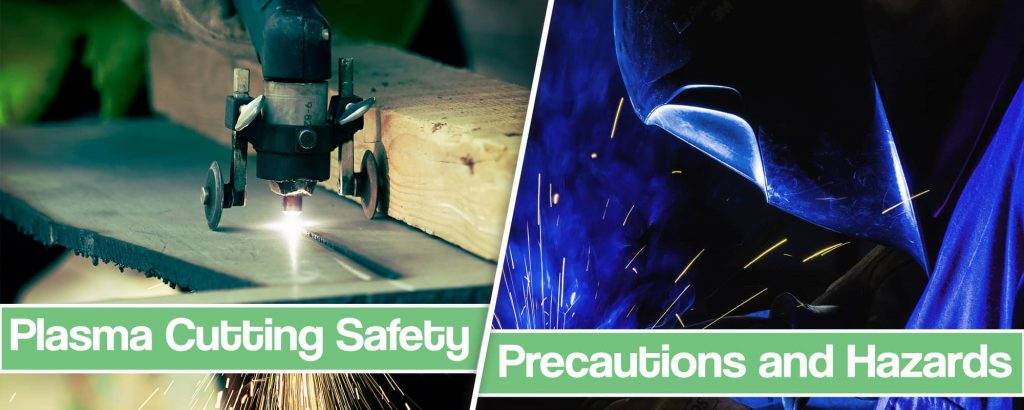
A few methods would help significantly reduce the risk of a hydrogen explosion. One way to do this is using a tank with a water level control option. With this option, it becomes easier for the operator to let the hydrogen molecules escape by lowering the water level.
Also, do not forget to wear your protective gadgets, including a welding helmet, goggles, welding gloves, boots, jackets, earmuffs, and chaps. Plasma cutting produces sparks and radiation, so wearing these protective gear would help protect your body from injuries.
Besides, ultraviolet radiation produced during the process could burn your cornea, causing a condition known as arc eye if you do not wear your goggles.
Other ways to avoid hazards during aluminum plasma cutting include;
Install an Aerator
An aerator is a setup with a few tubes. These tubes hooked up to the workshop air have little holes drilled into them. These tubes at the tank’s bottom would force air bubbles to rise under the aluminumt. Consequently, reducing explosion considerably by pushing the hydrogen bubbles out of the way.
Install A Bubble Muffler
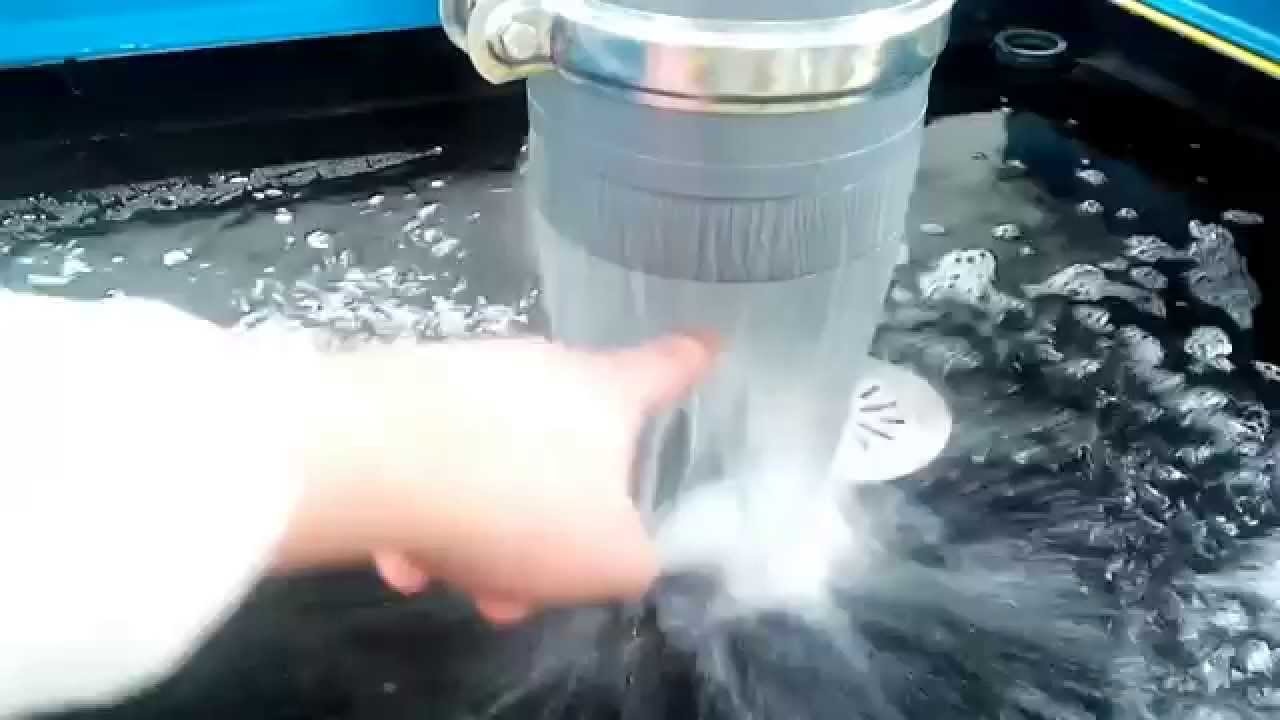
This is a device that shields the plasma using compressed air passed through the inner nozzle. This muffler installed on the cutting torch also pumps a high volume of water through the outer nozzle, blasting hydrogen and cut aluminum pieces away from the arc.
The bubble muffler, aside from eliminating hydrogen, also reduces UV radiation, noise, and fumes generated during the cutting process.
Install a Filtration System
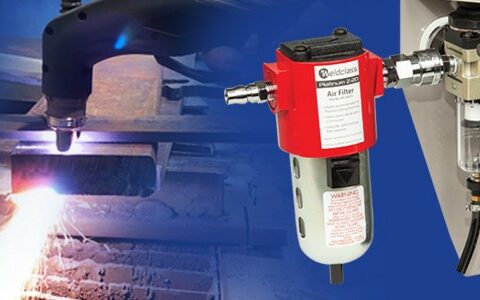
A filtration system has two major components; a centrifuge and a high-volume pump. The primary purpose of this system is to prevent the hydrogen molecules from forming bubbles by separating them early. It does this by spinning the water around inside the unit.
Asides from separating hydrogen molecules, a filtration system also helps keep the water clean by filtering it out. It helps rid the water of contaminants like aluminum particles that could interfere with the cutting process.
Avoid Unsuitable Aluminum Alloy
Although it is alright to cut most regular aluminum plates and sheets using the plasma cutting technique, there are some exceptions. These exceptions include;
Anodized Aluminum
Anodization increases the thickness of natural oxides on the surface of an aluminum sheet. However, anodized aluminum is vulnerable to high temperatures, especially within the range obtained during plasma cutting. Fabricating anodized aluminum using a plasma cutter will damage the metal surface close to the area you are cutting.
Aluminum Floor Plate
Also called tread plate, durbar plate, or diamond plate. They are aluminum plates with raised sections. These sections often interfere with the arc-voltage height control on the plasma cutter, making these plates difficult to cut. Also, aluminum floor plates often have poor cut quality when finally cut.
Aluminum-Lithium Alloys
These are alloys commonly seen in the aerospace industry. This industry uses them in making parts for rockets, choppers, airplanes, etc. Their strength-to-weight ratio is outstanding, but they have high volatility around water. In other words, when you try cutting alloys in the presence of water, there is a high chance they will explode or burst into flames. So, if you must fabricate aluminum-lithium alloys,
Finally, when aluminum pieces fall into the water, do not let them stand. Instead, remove them immediately. Also, remove molten aluminum from the plate during the cutting process.
Plasma Cutting Vs Laser Cutting Aluminum: Which is Better
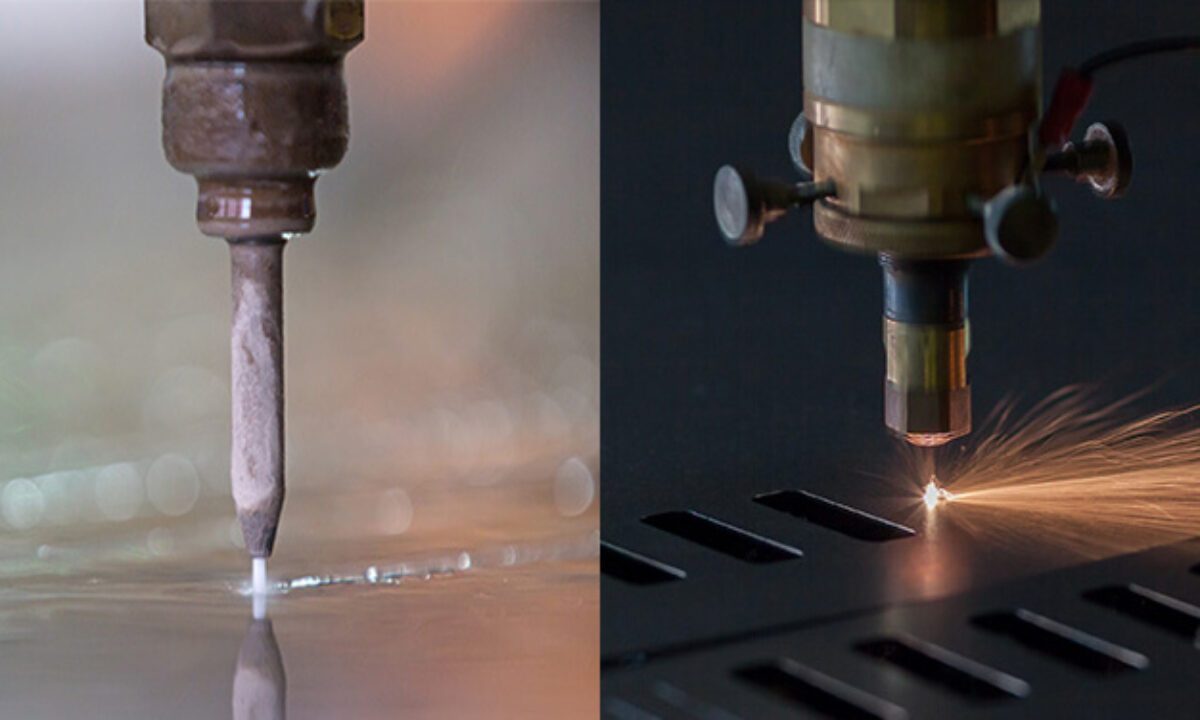
Plasma cutting vs laser cutting as well as waterjet cutting vs plasma cutting is two arguments fabricators often make. However, it is important to note that they are all metal fabrication processes with applications across a diverse range of industries and manufacturing settings. But in this article, we will focus on plasma cutting and laser cutting. Let us examine some performance parameters to help you choose which is better for your aluminum sheet fabrication.
Precision
Both aluminum fabrication methods’ precision depends on the thickness of the aluminum. When cutting thin sheets, It is best to use sheet metal laser cutting for a more precise cut. Laser cuts produce very narrow slots with high precision of 0.01mm or less. On the other hand, plasma cuts have a larger slot with a precision between 0.5-1mm.
Also, keep in mind that the precision of laser cutting reduces considerably with an increase in the thickness of the material, as opposed to plasma cutting. In other words, plasma cutting offers higher precision when cutting thick aluminum sheets than laser cutting.
Cutting Range
Plasma cutters can only cut through materials that conduct electricity, meaning they cannot cut through materials such as wood, leather, etc. On the other hand, laser cutters can cut through a variety of laser cutting materials with high precision.
However, regarding cutting range and material thickness, plasma cutting has a higher cutting range than laser cutting. Plasma cutting can cut aluminum sheets and plates up to 38mm, compared to laser cutting’s 12.7mm thickness.
Equipment Cost
Acquiring a laser cutter is more expensive than buying a plasma cutter. That is to say, capital investments are significantly higher for laser cutters than for plasma cutters.
When buying a laser cutter to cut aluminum, you could spend between $4,000 to $16,000. Conversely, you can get a plasma cutter for as low as $200, depending on the functionality you want on your cutter.
Operation Cost
Asides from the higher investment cost often seen with laser cutting machines, they also have a higher operational cost. The operating cost for plasma cutters ranges around $15/hr, while laser cutters average around $20/hr.
Additionally, operational costs include the cost of power and gasses during the process. It also provides for the cost of maintaining the machines and replacing worn-out parts.
Productivity
The productivity of each method depends on the aluminum thickness or other metals being cut. For thinner metals, the productivity rate of laser cutting is higher than that of plasma cutting. This is due to the speed with which laser cutting fabricates thin aluminum sheets. However, with an increase in thickness, the productivity of laser cutting decreases considerably.
Choose the Right Plasma Cutting For Aluminum Parts
Plasma cutting as a metal fabrication method involves using ionized gasses at high temperatures to cut through metals. Hopefully, this article provides all the information you need for your plasma cutting project. Also remember to pay attention to safety by wearing safety gadgets and following necessary instructions.
If you are currently looking for a plasma cutting service provider, then you are in the right place. At RapidDirect, we offer top-tier plasma cutting services, unrivaled industry-wide. We cut your aluminum and other metal parts, guaranteeing high precision and tolerance. Furthermore, our pricing is competitive and budget-friendly. So what are you waiting for? Upload your design to get quotes and a free DFM analysis today!


